Bastia Walking Tour
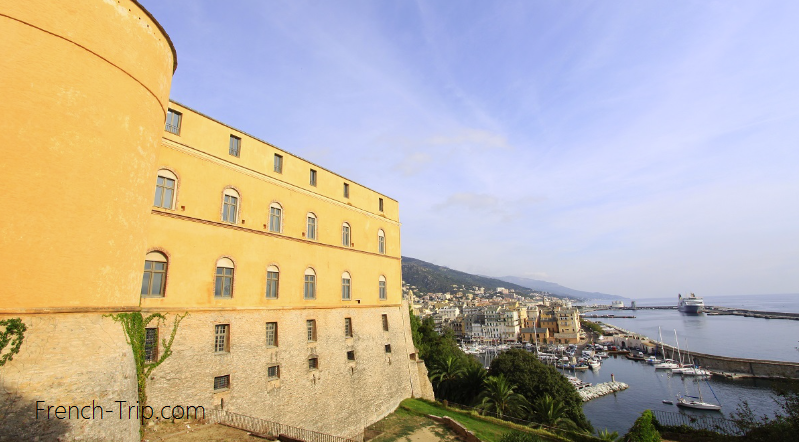
Bastia is the second-largest city in Corsica and serves as a major port, connecting the island to mainland France and Italy. Its rich history is reflected in its architecture, particularly in the old citadel (Terra Vecchia) and the old port area. This leisurely walk offers the perfect balance of history, culture, and stunning coastal views, making it a memorable way to experience the heart of Bastia.
Bastia’s historical background:
Bastia, founded in 1380 by the Genoese as a fortress town, quickly rose to prominence as the capital of Genoese Corsica in 1419. For centuries, it served as a vital port and administrative center under Genoese rule, developing into a thriving city with impressive architecture.
The city played a significant role during the Corsican Revolution (1729-1769), enduring several sieges. In 1768, Corsica, including Bastia, came under French control. Though it briefly remained the capital of French Corsica, it lost this status to Ajaccio in 1811. Despite this, Bastia continued to grow economically in the 19th century, particularly in wine and cap-making industries.
The city suffered considerable damage during World War II but was subsequently rebuilt and modernized. Today, Bastia stands as Corsica’s second-largest city, a major port, and a testament to its rich Genoese and French heritage, with its old citadel and port area reflecting its historical significance.
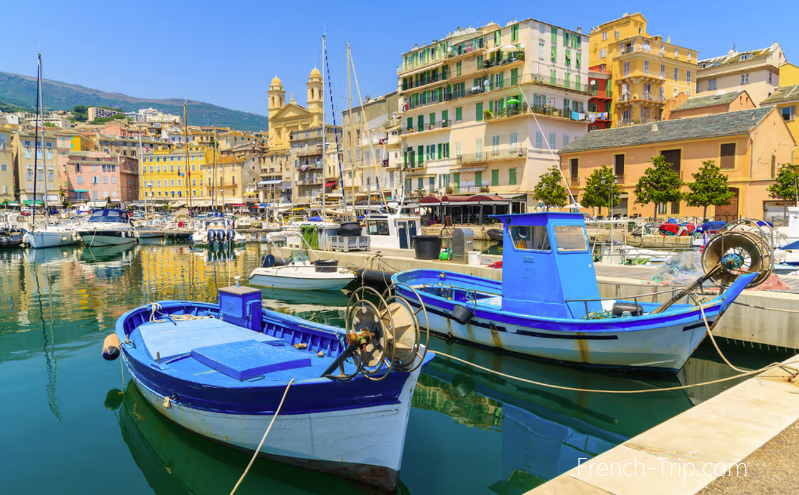
Bastia Walking Tour
This tour covers approximately 2 kilometers and can take 2-3 hours, depending on how long you spend at each site. It provides a comprehensive overview of Bastia’s historical, cultural, and architectural highlights.
Step 1: Start at Place Saint Nicolas
Your tour begins at Place Saint Nicolas, a wide esplanade with breathtaking views over the Mediterranean. This is main shopping street in Bastia, about 400 meters long.
Take in the lively atmosphere, especially on Sunday mornings when the traditional flea market attracts bargain hunters. Enjoy the shade of the hundred-year-old plane trees, and don’t forget to admire the monumental statue of Napoleon Bonaparte, standing proudly against a backdrop of elegant 19th-century bourgeois buildings.
If you’re looking for a coffee or light snack, this square is lined with restaurants and cafés, making it the perfect spot for a quick break.
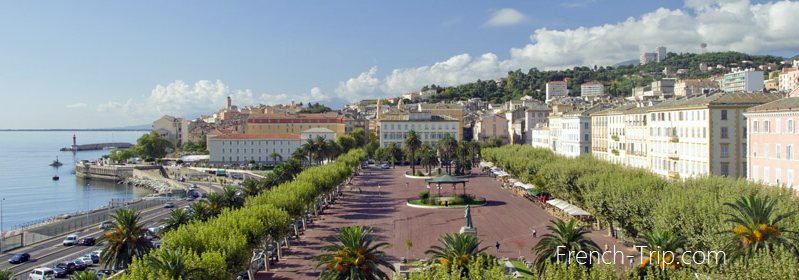
Step 2: Walk Along Rue Napoléon
Next, head towards Rue Napoléon, a pedestrianized street that lies halfway between Place Saint Nicolas and the Old Port. This bustling street is filled with trendy boutiques and delightful eateries, perfect for a shopping stop or a bite to eat.
Along the way, make sure to visit the Oratories of Saint Roch (San Roccu) and the Immaculée Conception (Oratoire de l’Immaculée Conception), two hidden gems of Bastia’s religious heritage, offering peaceful retreats and fascinating architecture.
Step 3: Visit Place du Marché (“u Mercà”)
Just a short stroll from Rue Napoléon, you’ll find Place du Marché, a bustling square affectionately known as “u Mercà.” This village-like area in the heart of the city is where everyone knows everyone. On weekends, it becomes a lively market filled with fresh produce and goods from local villages.
Take your time exploring the market, meet the local vendors, and enjoy the authentic atmosphere of Bastia.
Step 4: Head to the Old Port
Continue your walk towards the Old Port, a picturesque harbor where pleasure boats sit side by side with fishermen’s boats. The vibrant colors and styles of the buildings create a postcard-perfect scene, ideal for a relaxing moment of contemplation or people-watching.
It is known locally as “Porto Cardo” or “U Portu Vechju” in Corsican.
This area is also a great place to stop for lunch or dinner, with plenty of charming restaurants offering fresh seafood and local specialties.
Step 5: Ascend to the Citadel
From the Old Port, make your way to the Citadel (Terra Nova). You have two options:
- Take the lift up to the Mantinum, an outdoor theater with breathtaking views over the islands of the Tuscan archipelago.
- Walk through the Romieu Gardens, a cool and scenic path that leads to Place du Donjon, located at the heart of the Citadel.
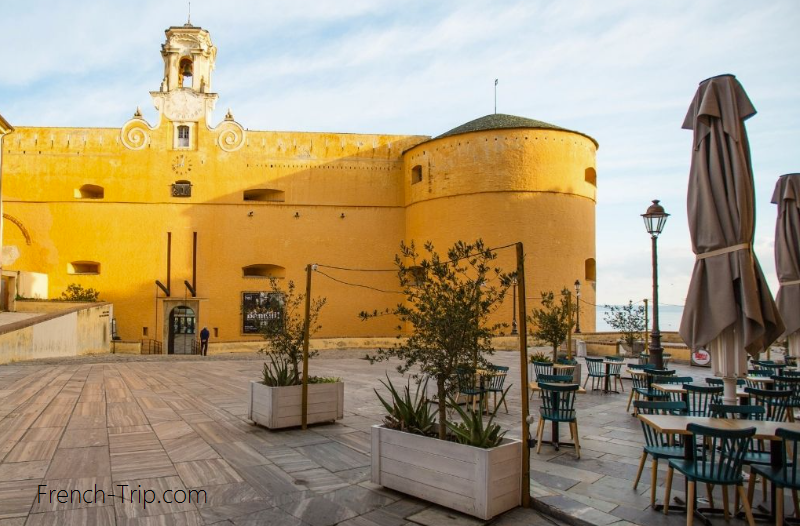
Step 6: Explore the Citadel and Governors’ Palace
Once inside the Citadel, wander through its narrow streets and discover the Governors’ Palace, now home to the city museum. History enthusiasts will love exploring this Genoese-built fortress and its beautiful hanging gardens.
Don’t miss a visit to the Cathedral of Sainte Marie and the Sainte Croix Oratory (Ghjesgia Santa Croce), two stunning examples of Bastia’s religious heritage.
Cathedral is 17th-century baroque church, also known as “L’Église de l’Assomption“. It is notable for its ornate interior with frescoes and gilded decorations. Church houses several important religious artworks. Walk up to its bell tower which offers panoramic views of the city (if open to visitors).
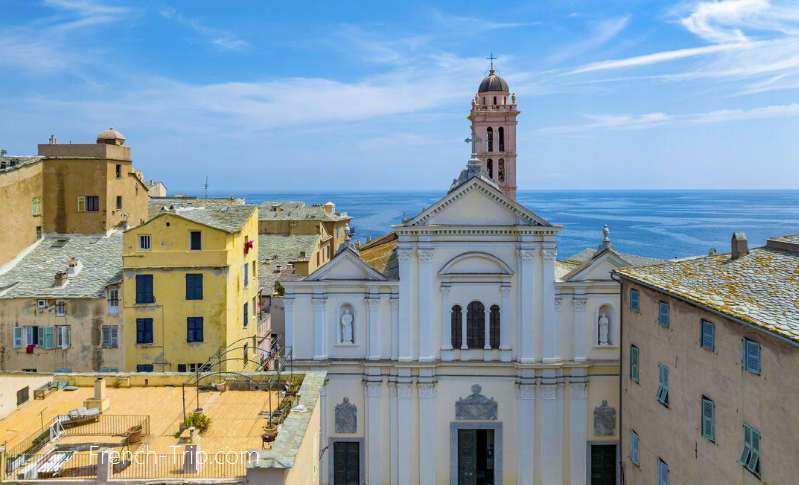
Step 7: Return via the Aldilonda Walkway
To conclude your tour, take the Aldilonda footbridge, which runs along the cliffs, offering spectacular views of the sea. This scenic walkway is especially popular with joggers and those who enjoy outdoor activities. You can follow the path to Spassimare, a gentle route that connects the town center to Arinella Beach.
Bastia Walking Tour on Map
Archives
Calendar
| M | T | W | T | F | S | S |
|---|---|---|---|---|---|---|
| 1 | 2 | 3 | 4 | 5 | 6 | 7 |
| 8 | 9 | 10 | 11 | 12 | 13 | 14 |
| 15 | 16 | 17 | 18 | 19 | 20 | 21 |
| 22 | 23 | 24 | 25 | 26 | 27 | 28 |
| 29 | 30 | 31 | ||||